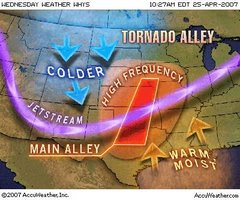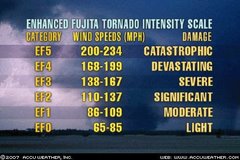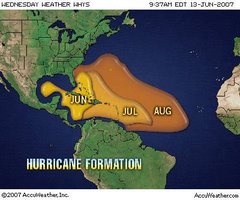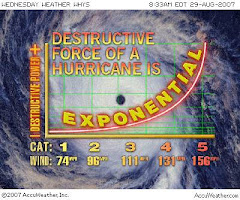1. San Diego Animal Services Pet Disaster Plan
2. FEMA - Information for Pet Owners
3. California Department of Forestry
2. FEMA - Information for Pet Owners
3. California Department of Forestry
(CDF) "Animal Evacuation" .pdf link
4. "Animals in a Disaster"- FEMA training link
4. "Animals in a Disaster"- FEMA training link
#1
 Animals in a Disaster - Part 1
Animals in a Disaster - Part 1 There are a variety of pets, from birds and snakes to cats,dogs,horses and exotic animals.The Animals in a Disaster,Emergency Management Series will cover the fundmentals of emergency management for animals.
Our pets enrich our lives in so many ways. Pet owners and care providers enjoy an improved quality of life. Pets are considered companions, confidants, partners at work, health facilitators and status symbols.
According to the American Pet Products Manufacturers Association's -LINK(APPMA)2005/2006 statistics, 63% of U.S. households own a pet, which equates to 69.1 million homes, 45% of U.S. households own more than one pet. It is estimated that in 2007 40.8 billion dollars will be spent on pet supplies and services.
As can be seen from these basic statistics, pets hold a very special place in our lives so keeping our companions safe in the event of a disaster is very important to us.
#4
 Pet Preparedness
Pet PreparednessWe typically think of disasters as cataclysmic events such as floods, hurricanes, or earthquakes. However,
individual family disasters are much more common. It is estimated that the United States suffers more than 150,000 household fires; 10,000violent thunderstorms; 5,000 floods; 800 tornadoes; many forest fires
and several hurricanes and earthquakes every year. Each year, two to three million people are affected by disasters. Although we hope it never happens to us it is wise to be prepared.
individual family disasters are much more common. It is estimated that the United States suffers more than 150,000 household fires; 10,000violent thunderstorms; 5,000 floods; 800 tornadoes; many forest fires
and several hurricanes and earthquakes every year. Each year, two to three million people are affected by disasters. Although we hope it never happens to us it is wise to be prepared.
The Hazard -Knowing What to Expect
Our pets,as well as ourselves, are exposed to 3 different types of hazards.
Meteorlogical(weather), Geological(terra firma)
and Technological(man-made).
In some areas of the country we are prone to one hazard more than another or if we live in a very "diverse" area we may experience two or more. The technological hazard, a possible terrorist strike for example,we are all exposed to. Knowing your area and the possible hazards will help you prepare for specific events.
Building a Solid Foundation
One Phase at aTime
One Phase at aTime
Because there are so many hazards this article will cover the fundamentals of pet emergency management. The first phase in successful emergency management is mitigation. The other three phases,preparedness,response and recovery will be covered in subsequent articles. By building your pet emergency management foundation one phase at a time you will understand and be prepared to deal with the four phases of most emergencies and find it much easier to understand the actions of official emergency managers; and therefore help with the official response.

First Phase -Mitigation
Mitigation is any activity that prevents an emergency from occuring, reduces the chance of an emergency occuring, or reduces the damaging effects of unavoidable emergencies.
Mitigation activities take place before and after emergencies.
Mitigation is any activity that prevents an emergency from occuring, reduces the chance of an emergency occuring, or reduces the damaging effects of unavoidable emergencies.
Mitigation activities take place before and after emergencies.
With unfamiliar sounds, smells and sights that follow a disaster, pets can easily become confused and get lost. Dogs and cats should wear appropriate identification at all times. Examples of appropriate identification include, tags with your name, address and phone number. You should also include the phone number of a friend or relative from out-of-state. More permanent methods include microchips, freeze marking and tattoos.Examples of appropriate identification for birds include: leg bands, microchips or tattoos. These are most useful if the information on them is included in a national registry.
Current photographs of your pet will help with identification after a disaster. You should also send photos of your pet to your out-of-state friend or relative.
Know your cat and dog’s common and favorite hiding places.Once the chaos starts, this is where you will find them. Make a list of the places where you can get veterinary care,food,shelter and housing for your pets in an emergency. Find out what they provide and what they would need from you.Special facilities may be required for birds or exotic animals. Make a commitment to gather this information now.
Know your cat and dog’s common and favorite hiding places.Once the chaos starts, this is where you will find them. Make a list of the places where you can get veterinary care,food,shelter and housing for your pets in an emergency. Find out what they provide and what they would need from you.Special facilities may be required for birds or exotic animals. Make a commitment to gather this information now.
Contact Tod at Critical Times Emergency Management (CTEM)-email link or call 1-619-518-8980.
He will work with you in putting together a custom Pet Emergency Management Package that will prepare you and your pet.
Second Phase- Preparation
Know Your Hazard
Knowing your hazard allows you to prepare for a specific emergency. Select your hazard to be linked to an informative CTEM article.














No comments:
Post a Comment